Do you know fast and accurate autofocus and a high burst rate are the two most important features of the best camera for sports photography that help capture sharp photographs of fast-moving players and objects? Whether a beginner is buying his first sports photography camera, a tight budget sports lover is looking for a budget camera to save some money without compromising on your needed functions, or a professional photographer is updating to a new one, we have everything for you. Our team spent hours, even days, on new models, choosing the best sports photography cameras, analyzing their features, comparing them with the best sports photography camera brands, and getting real user reviews to create the list of top-rated cameras for sports photography.
Best Cameras for Sports Photography – Fast Focus Cameras for 2024
Product Name Megapixels Burst Mode (AF) Points Price 24MP 11fps 425 AF 32.5MP 11fps Dual Pixel 24.3MP 11fps 179 AF 20.9MP 11fps 209 AF 24.5MP 12fps 273 AF 24.2MP 20fps 693 AF 32.5MP 20fps 651 AF 12.1MP 12fps 49 AF 20.4MP 18fps 16MP 7fps 273 AF









Top Picks for Best Cameras for Sports Photography
1. Sony Alpha a6400 Mirrorless Camera – Best Beginner Camera for Sports Photography
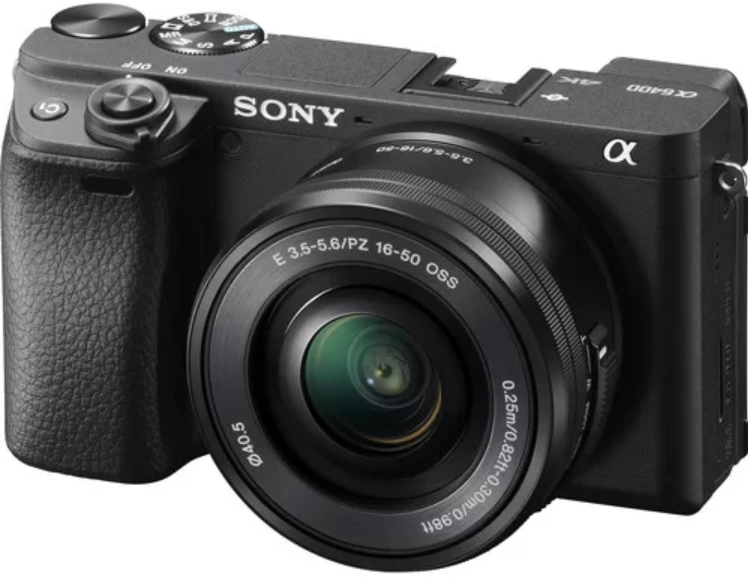
Quick Features
- 24MP APS-C sensor
- Max burst 11fps
- 3 inches tilting Touch screen
- 425 phase-detection autofocus points
The Sony Alpha A6400, nestled in Sony’s mid-range crop sensor lineup, offers a perfect blend of features to make it a top choice for beginners and experienced photographers venturing into sports photography. This interchangeable lens camera has a 24 MP APS-C sensor, a great autofocus system, and impressive video capabilities.
The A6400’s compact, durable body is designed for comfortable handling. So, this is one of the best cameras for long shooting sessions. Its magnesium alloy construction adds sturdiness without excessive weight. Plus, it’s weather-sealed and allows shooting worry-free in less-than-ideal conditions.
As an entry-level Sony camera for sports photography, the A6400 features the widely acclaimed E-mount, known for its versatility among mirrorless mounts. Paired with the 16-50mm Power Zoom kit lens, it is good for beginners who want to upgrade and budget-conscious photographers looking for professional-grade features. Professionals often opt for such mirrorless cameras as reliable backups or behind-the-scenes shooting.
The A6400 is a top-rated camera for photography genres, including casual shooting, street, travel, and documentary photography, thanks to its portability and capability. However, it truly shines in sports, action, and wildlife photography thanks to its exceptional autofocus system.
With 425 contrast-detection and 425 phase-detection points, it delivers lightning-fast focus, while AI-trained technology ensures precise tracking, even at high speeds. Eye detection is impressive, capturing eyes from full-body shots effortlessly.
The camera’s burst mode, capturing 11 fps with the mechanical shutter, is ideal for fast-paced action. However, be cautious of lens apertures when shooting in burst mode. Clearing the buffer, particularly with UHS-I SD memory cards, can be time-consuming, briefly halting your shooting or review process.
For videographers, the A6400 offers 4K recording at 24, 25, and 30 fps, albeit with a 1.2x crop at 30 fps. Full HD at 120 fps is also on the menu. While it records at 8-bit, 4:2:0, limiting extensive grading, the autofocus in video mode is a standout feature. There’s no recording time limit, and Log and HDR picture profiles are available.
Expert Opinion
The Sony Alpha A6400 is a great choice, especially for beginners in sports photography. Its compact design, versatile E-mount, and remarkable autofocus system make it an excellent entry-level camera.
However, we didn’t like the rolling shutter artefacts in the video and some ergonomic issues, like the unintuitive menu system and underutilized touch screen.
Pros & Cons
Pros
- Excellent autofocus system
- Compact and weather-sealed body
- E-mount with extensive third-party support
- Comfortable grip and responsive electronic viewfinder
- Exceptional burst mode for action photography
Cons
- Rolling shutter artifacts in video
Check Out More Reviews Here.
2. Canon EOS 90D – Best Canon Camera for Sports Photography
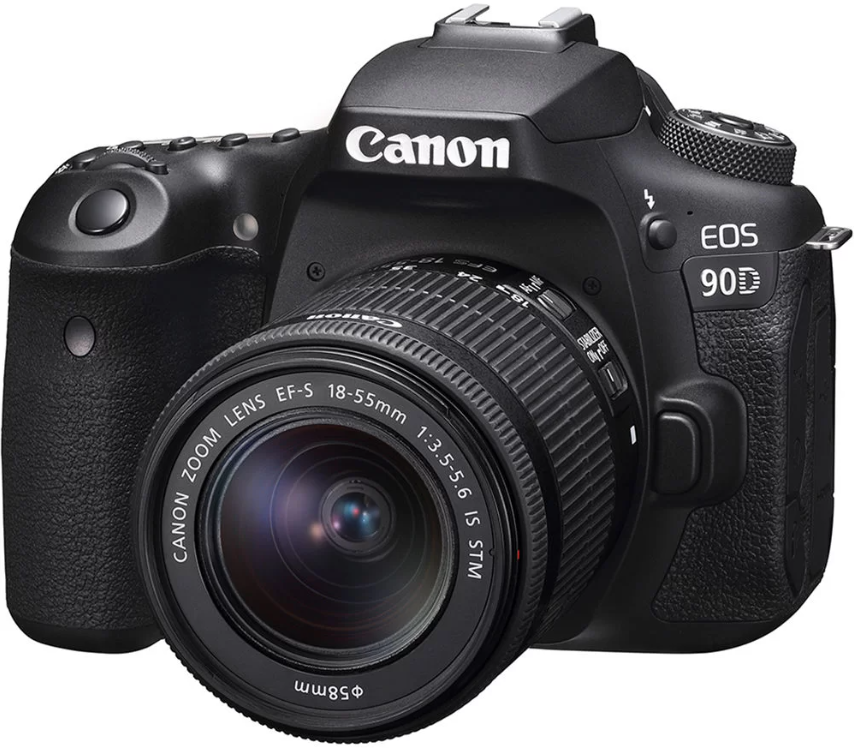
Quick Features
- 32.5MP APS-C sensor
- Max burst 11fps
- 3-inch touchscreen display
- Dual Pixel Autofocus
In a world increasingly dominated by mirrorless cameras, Canon’s EOS 90D is one of its kind. This sports photography camera marries the best of both worlds, combining mirrorless video capabilities and live-view autofocus with the classic handling of a DSLR.
The EOS 90D adheres to Canon’s time-tested design philosophy. A traditional SLR-shaped body in basic black complemented by a versatile swing-out touch LCD and an optical pentaprism viewfinder. The combination of these features ensures durability, splash, and dust protection. Compact at 4.1 x 5.5 x 3.0 inches and weighing 1.6 pounds (without a lens), its dimensions and grip will be familiar to anyone using recent Canon DSLRs.
Canon maintains a sense of familiarity with the EOS 90D’s controls. The Mode Dial, On/Off switch, hot shoe, and shooting controls retain classic placements. Adding an autofocus control stick is a welcome enhancement, making it easier to move the focus area. However, the rear control wheel’s new texture might only suit some people’s tastes.
With built-in Wi-Fi and Bluetooth, the EOS 90D offers seamless smartphone and tablet connectivity through the Canon Camera Connect app. The camera’s large LP-E6N battery provides ample power for extended shooting sessions, featuring an official CIPA rating of 1,300 photos per charge. However, the camera lacks in-camera charging, opting for a micro USB 2.0 connector rather than the increasingly common USB-C.
The EOS 90D impresses with its responsiveness. It powers on, focuses, and captures a photo in approximately one second. The autofocus system performs admirably, locking onto subjects swiftly, whether using the optical viewfinder or rear display.
It shoots up to 10fps in AI Servo continuous focus via the optical viewfinder and 11fps in Live View. The buffer can accommodate about 20 Raw+JPG, 30 Raw, or 40 JPG images before slowing down. The optical viewfinder has a 45-point autofocus system with improved subject recognition and tracking.
This best Canon camera for sports photography introduces a new APS-C image sensor for Canon with an impressive resolution of 32.5MP. The increased resolution offers more cropping flexibility, and despite its pixel density, the sensor handles noise impressively.
The Canon EOS 90D brings enhanced video features to its class, supporting 4K video with Dual Pixel AF. It also offers 1080p at 30 or 60fps, with 24fps coming soon via firmware update. While video options aren’t exhaustive, Dual Pixel AF ensures reliable autofocus in 4K video. However, the camera needs advanced video features in its price range, and in-body stabilization is absent, needing stabilized lenses for handheld work.
Expert Opinion
The Canon EOS 90D is a reliable choice for sports and wildlife photography with its solid image quality, fast shooting speeds, and excellent autofocus system. Its familiar handling and durable build make it a comfortable option for DSLR enthusiasts.
However, videographers looking for advanced features can find better options in the mirrorless market.
Pros & Cons
Pros
Cons
Check Out More Reviews Here.
3. Sony Alpha a6000 – Best Budget Camera for Sports Photography
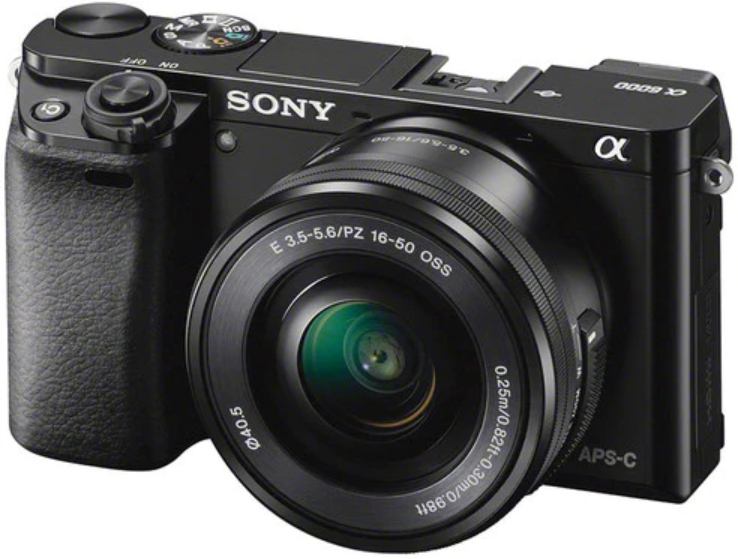
Quick Features
- 24.3MP APS-C sensor
- Max burst 11fps
- 3-inch LCD display
- 179 phase-detection autofocus points
The Sony Alpha a6000, first introduced in 2014, continues to shine as an affordable gem in the competitive camera market. While newer models have emerged, this APS-C mirrorless camera for sports photography maintains its appeal with a 24.3-megapixel sensor that holds its ground against contemporary rivals. Although it lacks 4K video capabilities and has slower autofocus than its successors, the a6000 remains an excellent choice for budding photographers seeking budget-friendly sports gear.
The a6000 impresses with its sturdy build quality. Although crafted from plastic, it maintains a durable feel. Hinged doors protect inputs and the battery compartment, while buttons offer tactile feedback. Portability is the best thing about a6000, thanks to its low-profile design and lightweight construction.
This affordable sports photography camera easily slips into a bag or accompanies you. While its compact form feels comfortable, those with larger hands may find the relatively small handgrip and body somewhat cramped.
While decently sized, the electronic viewfinder (EVF) on the a6000 needs higher resolution than newer models. However, it still offers a reasonably comfortable viewing experience with minimal lag. Navigating the a6000’s menu system is a challenging experience due to the older design. Despite this, the camera provides extensive customization options for buttons and menus.
The 3-inch tilting LCD screen improves versatility, particularly for waist-level shooting. While it performs admirably in bright conditions, its lack of touch capability makes menu navigation and focus point selection less convenient.
In terms of battery life, this best affordable camera for sports photography delivers a respectable 360-shot CIPA rating for photos. Using the camera while charging via USB is another valuable feature. Video recording, limited to 1080p, conserves battery life, offering 113 minutes of tested video recording time.
Continuous shooting capabilities are decent, especially in high-speed drive mode, making it suitable for capturing fast-moving subjects. The a6000’s autofocus has a hybrid on-sensor AF system with phase-detection and contrast-detection AF points. In comparison, it offers face and eye detection, auto-tracking struggles with faster-moving subjects.
The camera lacks in-body image stabilization but compensates with optically stabilized lenses. The Sony E 16-50mm kit lens offers ‘Optical SteadyShot,’ effectively reducing camera shake for handheld shooting.
The a6000 has a good dynamic range, preserving highlights well in high-contrast scenes. Fine detail is well-resolved, with RAW noise handling remaining decent at low ISO values. However, noise becomes noticeable as ISO settings increase, particularly in low-light conditions.
Video quality is decent, suitable for casual recording, but less impressive in low-light scenarios. Autofocus for video performs reasonably well with human subjects but delays in tracking.
Expert Opinion
For those who want to buy the best budget camera for sports photography, the Sony Alpha a6000 is an appealing choice. Its solid performance, portability, and competitive image quality make it an attractive option for beginners. While it doesn’t have the latest bells and whistles, it remains a reliable companion for capturing sports action without breaking the bank.
Pros & Cons
Pros
Cons
Check Out More Reviews Here.
4. Nikon Z 50 – Best Nikon Camera for Sports Photography
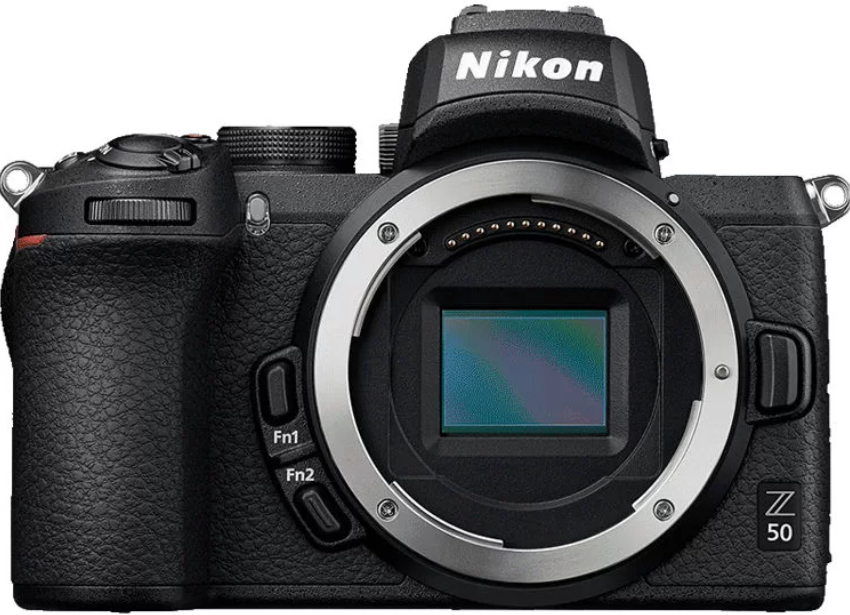
Quick Features
- 20.9MP APS-C sensor
- Max burst 11fps
- 3-inch LCD display
- 209 phase-detection autofocus points
Nikon’s entry into the APS-C mirrorless arena, the Nikon Z 50, is a versatile and well-rounded camera for a diverse audience. The appeal of this Nikon camera for sports photography is further enhanced when bundled with the 16-50mm kit lens. The camera’s fold-down screen and commendable low-light capabilities render it a reliable companion for on-the-go shooting.
Despite its compact form factor, the camera effectively balances ease of use, durability, and swiftness in operation. It promises top-tier image quality, as expected from modern APS-C cameras. Nikon Z 50 has an interchangeable lens system centered on Nikon’s Z-mount, a relatively recent contender in the mirrorless domain. Nikon’s “Experience Kit,” which includes a 16-50mm lens, a 50-250mm lens, and an FTZ mount adaptor, offers a comprehensive package for sports photographers.
The Z 50’s compatibility is a double-edged sword. Built upon the Nikon Z-mount, originally optimized for full-frame use, it comfortably accommodates the smaller APS-C sensor. This design ensures future compatibility, with the mount remaining consistent across Nikon’s full-frame and crop sensor mirrorless cameras. Its market-leading 55mm diameter and record-setting 16mm flange distance are unique to the Z-mount, enabling compatibility with adapters for various lenses.
The Nikon Z 50 mirrorless camera for sports photography has a 20.9MP APS-C sensor. With its approximately 13 stops, the sensor’s dynamic range excels in landscapes and scenes with varying contrast.
Highlight-weighted metering mode, a standout feature, prioritizes protecting highlights and is an invaluable asset for quick situations. High ISO performance meets contemporary standards, although grain style preferences may vary. Noise remains controlled until ISO 25600.
Image quality impresses, with RAW files emerging neutrally free from color casts, excessive sharpening, or noise reduction. Despite lacking sensor stabilization, the kit lenses feature excellent optical stabilization, enabling handheld shots at slow shutter speeds.
The Z 50’s hybrid autofocus system combines phase and contrast detection with 209 AF points across the sensor. It delivers smooth and swift performance. Thanks to the stepping motors within kit lenses and other Z-mount options, Autofocus remains virtually silent and vibration-free.
However, in full-area AF mode, the Z 50 occasionally struggles with telephoto lenses, particularly beyond 50mm. Switching to tighter AF modes resolves this issue.
Face and eye detection function efficiently, but eye detection needs larger subjects for precise portrait work at wide apertures. Tracking subjects through a burst of roughly 50 frames at 11fps yields a commendable keeper rate but for sports and rapid action.
While capable of video recording, the Nikon Z 50 offers good but not exceptional options. Its 4K video at 30fps carries a 1.5x crop, limiting wide-angle shooting. The 1080p mode records at 120fps with full sensor width, delivering smooth but slightly soft footage. Autofocus excels in video, offering accuracy and smooth transitions.
Expert Opinion
The Nikon Z 50 is a formidable contender for sports photographers who want to buy a compact yet versatile camera. Its adaptability, high-quality manufacturing, and strong image quality make it ideal for various photography styles.
While video capabilities are not ideal, the camera still makes it to the top-rated sports photography cameras list.
Pros & Cons
Pros
Cons
Check Out More Reviews Here.
5. Nikon Z 6II – Best Camera for Fast Sports
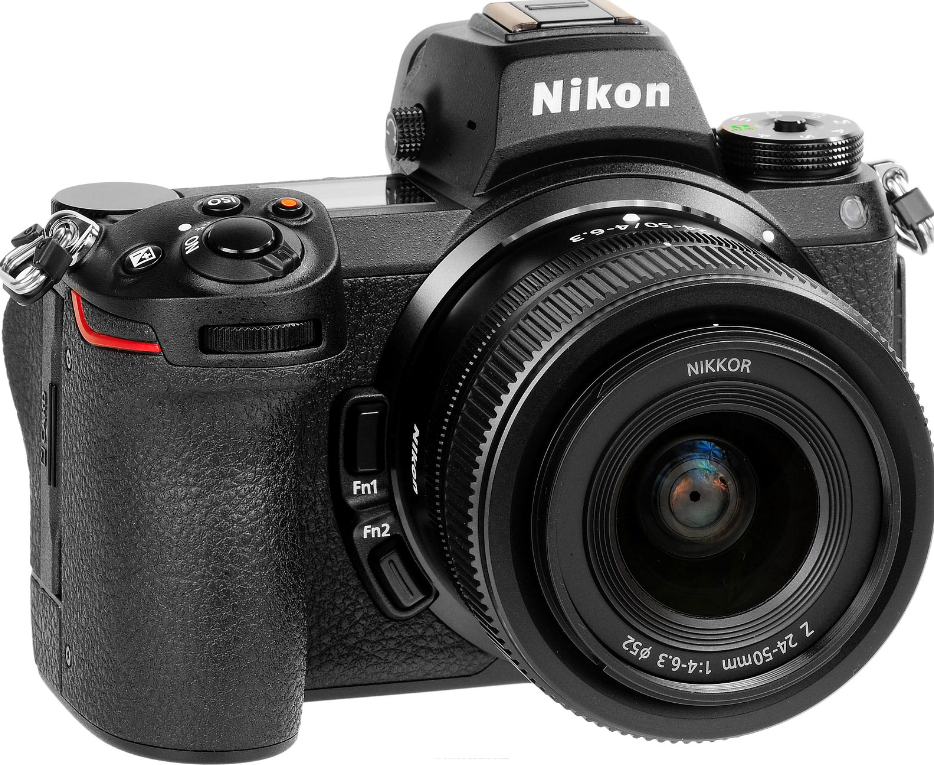
Quick Features
- 24.5MP APS-C sensor
- Max burst 12fps
- 3.2 inch LCD display
- 273 phase-detection autofocus points
The Nikon Z 6II is part of Nikon’s mirrorless Z-series, featuring a full-frame sensor with 24.5 megapixels and exceptional manufacturing quality. With impressive shooting speed and ISO sensitivity, this is one of the best cameras for sports photography. It’s a lightweight, weather-sealed camera that competes favorably with Nikon’s DSLRs.
The Z 6II closely resembles its predecessor, the Z 7, in design and controls. It features a top-mounted secondary screen displaying essential shooting information and incorporates dual control wheels, a shutter button, and dedicated buttons for functions like ISO and video recording. The camera’s menu structure will feel familiar to Nikon DSLR users, and the 3.69-million-dot electronic viewfinder offers an accurate preview of shots.
Despite its compact size, the Z 6II’s ergonomic grip makes it comfortable. However, using the FTZ lens adapter can be confusing when switching between native and adapted lenses due to tripod quick-release plate compatibility issues. Overall, the Z 6II is portable and easy to handle.
One essential sports photography feature of the Z 6II is its 5-axis sensor-shift stabilization system, a first for Nikon. This stabilization system enables sharp images even at slow shutter speeds and benefits both native Z lenses and F-mount lenses with the FTZ adapter. Also, the camera introduces eye-detection autofocus with firmware 2.0, which improves low-light autofocus sensitivity.
However, while generally good, the Z 6II’s autofocus needs to catch up in challenging low-light conditions compared to Nikon’s DSLRs. It lacks support for the AF assist beam on Nikon flashes, limiting low-light autofocus performance. The 3D tracking autofocus is less reliable than expected, especially in dynamic scenarios.
The Z 6II is good for low-light photography thanks to its larger pixels and high ISO range. It offers impressive image quality, vivid colors, and excellent skin tones. Native Z-mount lenses and adapted F-mount lenses deliver sharp results with the added advantage of in-body stabilization.
Regarding video features, the Z 6II introduces 10-bit video recording and a logarithmic tone curve, although these features need external recording via HDMI. Internally, it provides 8-bit video recording, offering videographers more options than traditional Nikon DSLRs.
Expert Opinion
The Nikon Z 6II has an ergonomic design, in-body stabilization, and low-light performance, which make it a prominent option for sports photography.
However, the firmware updates address some of its autofocus limitations, especially in low-light conditions.
Pros & Cons
Pros
Cons
Check Out More Reviews Here.
6. Sony a9 – Best Sony Camera for Sports Photography
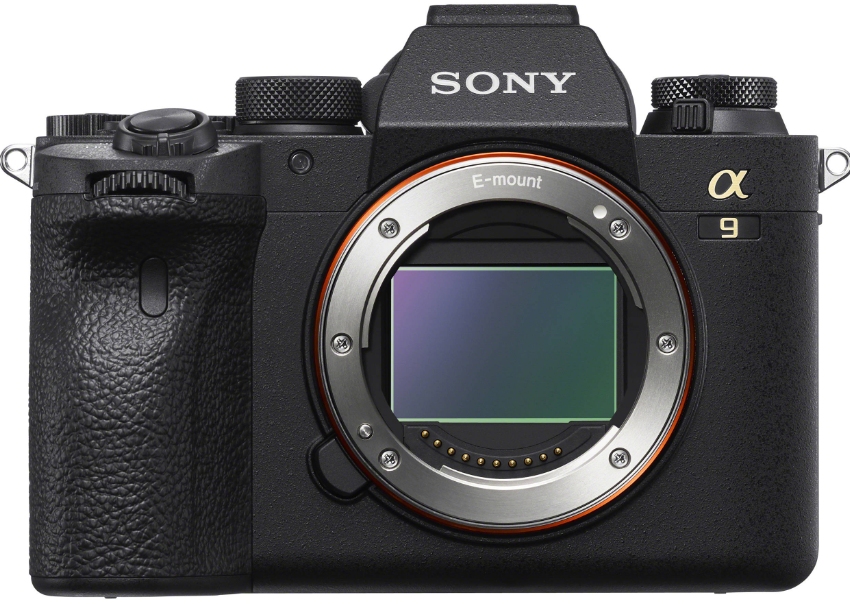
Quick Features
- 24.2MP APS-C sensor
- Max burst 20fps
- 3-inch LCD display
- 693 phase-detection autofocus points
Sony’s a9 is a true camera for sports photographers looking for speed and precision. It features a stacked sensor design with an ideal 20fps capture rate, an electronic shutter, and zero blackouts during exposure. With a compact body measuring 3.9 x 5.0 x 2.5 inches and weighing just 1.5 pounds (without a lens), the a9 is relatively lightweight and designed for ease of use.
The durable construction offers dust and moisture resistance.
Equipped with a 24MP B.S.I. sensor, the a9 delivers excellent image quality, especially at high ISO settings, reaching an impressive ISO 204800. The camera has a touch screen, an EVF with 0.78x magnification and 3,686k dots, and rapid refresh rates of 60 or 120fps for fluid tracking of fast-moving subjects.
The addition of a focus joystick makes selecting focus points effortless. While Sony’s menu system has been critiqued for complexity, the a9 introduces a customizable My Menu feature to streamline settings configuration.
Connectivity options include an Ethernet port, P.C. sync socket, microphone and headphone jacks, micro HDMI, and micro USB. This mirrorless camera for sports photography has improved battery life thanks to a higher-capacity battery, allowing for extended shooting sessions. Also, the a9 offers compatibility with a vertical shooting grip for added convenience.
The Sony a9 is synonymous with speed. It powers on, focuses, and captures shots in just 1.6 seconds. Its autofocus system is incredibly quick, achieving an average of 0.01 seconds in focus testing. When tracking fast-moving subjects, the a9 shines with its 20fps burst rate and consistent focus accuracy.
Burst duration varies depending on the file format, with Compressed Raw+JPG allowing for 225 shots in a single burst. The camera easily handles Uncompressed Raw, but its burst rate drops to 5fps when using the mechanical shutter for full-quality 14-bit Raw images. However, for most sports photographers, compressed files are a practical choice and image quality remains impressive.
Expert Opinion
The Sony a9 is a top choice for sports photographers looking for the best camera for capturing fast action. Its speed, autofocus capabilities, and image quality are ideal for sports photography. Despite minor limitations, the a9 is one of the best Sony cameras for sports photography.
Pros & Cons
Pros
Cons
Check Out More Reviews Here.
7. Canon E.O.S. R7 – best camera for low-light sports photography
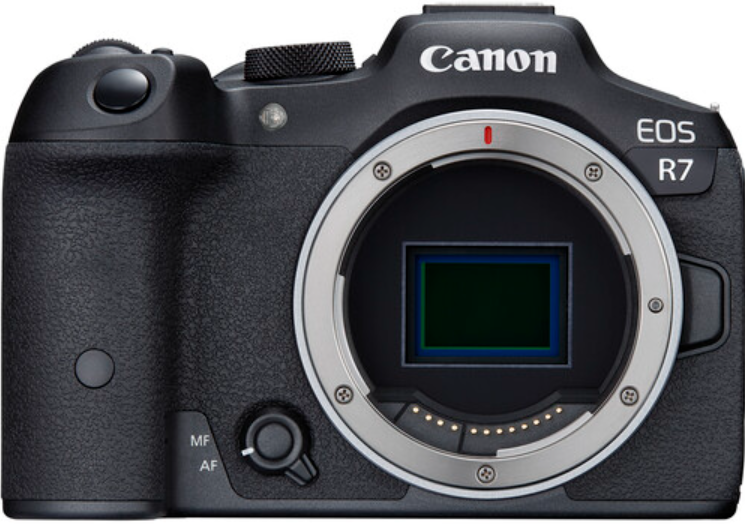
Quick features
- 32.5MP APS-C sensor
- Max burst 20fps
- 3-inch LCD display
- 651 phase-detection autofocus points
The Canon E.O.S. R7 is a solidly built camera designed with enthusiasts in mind. Its dust-and-moisture-protected chassis combines magnesium alloy and engineering-grade plastic for durability. The camera features a comfortable handgrip, ideal for telephoto lenses often used in sports and wildlife photography. Canon’s decision to integrate the rear command dial with the eight-way joystick makes control adjustments convenient.
For the first time, Canon introduced a 5-axis in-body image stabilization (IBIS) system to its APS-C lineup. This feature enhances the camera’s versatility, especially with wide and standard lenses. The E.O.S. R7’s autofocus system is a standout feature, offering quick and precise focus with subject recognition for people, animals, and vehicles.
The camera’s 4K60 video recording features and many built-in looks make it a good choice for videographers and content creators.
The camera’s autofocus system provides excellent tracking and subject recognition. The 15fps mechanical shutter captures fast-moving subjects effectively, which makes it the best camera for sports and action photography. Canon’s Dual Pixel A.F. system ensures reliable and swift focusing. While the electronic shutter is handy for some situations, it is ideal for capturing fast motion.
The Canon E.O.S. R7 has a 32.5MP APS-C sensor that offers remarkable image quality despite not using the latest B.S.I. technology. Its native ISO range of 100-51200 (expandable to 102400) is made for diverse shooting conditions. The R7 delivers sharp, vibrant, and detailed images in JPEG and R.A.W. formats in well-lit scenarios.
Its ability to preserve detail in shadows and highlights contributes to a wide dynamic range. It truly impresses in low-light situations, producing noise-free images up to ISO 6400 and well-managed noise at ISO 12800. The 5-axis in-body image stabilization enables sharp handheld shots and enhances low-light performance, especially with telephoto lenses. It’s the best choice for night sports and astrophotography enthusiasts, handling high ISO settings deftly for stunning results
Expert Opinion
The Canon E.O.S. R7 offers great autofocus performance, image stabilization, and video functions for low-light sports photographers and videographers.
Pros & Cons
Pros
Cons
Check Out More Reviews Here.
8. Panasonic LUMIX DMC-FZ300 – Best Camera for Sports Photography Under $500
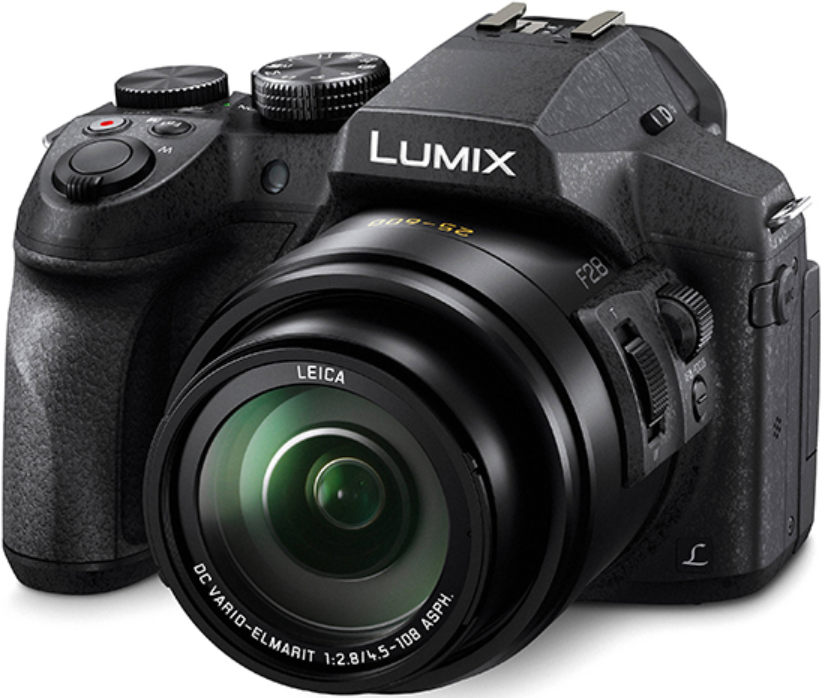
Quick Features
- 12.1MP M.O.S. sensor
- Max burst 12fps
- 3-inch LCD display
- 49 phase-detection autofocus points
Panasonic LUMIX DMC-FZ300 is a superzoom camera for photographers looking for a very long zoom range, and the ergonomics of an S.L.R. Lumix DMC-FZ300 features a durable dust and splashproof design. The ergonomic design provides comfortable handling with a substantial right-hand grip and intuitive button placement. This sports photography camera’s build quality speaks to its durability.
With a 12.1MP High-Sensitivity M.O.S. sensor and Venus Engine image processor, it offers excellent performance in low-light conditions and fast performance. The Leica DC Vario-Elmarit lens, with its constant f/2.8 maximum aperture and versatile 24x zoom range (25-600mm equivalent), ensures consistent and sharp results from wide-angle to super telephoto.
Also, it’s complemented by 5-axis HYBRID O.I.S. + image stabilization and significantly reduces shake during video recording. This Panasonic camera is a perfect option for sports photography lovers on a budget. It supports 4K UHD video recording and offers unique 4K Photo Modes to capture fast-paced action easily. Its Depth-From-Defocus (DFD) A.F. technology offers quick focusing.
The OLED Live View Finder and touch screen LCD enhance image composition and review. Also, built-in Wi-Fi facilitates wireless image sharing and remote camera control. This camera also has a dedicated macro mode to focus on subjects as close as 0.4 inches (1cm) away. Streamlining your post-production workflow, the camera lets you process raw image files in the camera, sparing you the hassle of extensive editing on your computer.
For shutter speed control, this Panasonic sports photography camera offers a mechanical shutter with a maximum speed of 1/4000 sec. and an electronic shutter function that reaches an impressive top speed of 1/16,000 sec.
For panoramic fanatics, the Creative Panorama mode is a gem. It simplifies the creation of seamless panoramic images. Just pan across your scene, and the camera automatically captures wide-field views. If you need additional light, the built-in pop-up flash comes to the rescue and provides an extra burst of illumination to enhance your subjects.
Battery life is a crucial concern for photographers on the move. The included lithium-ion battery offers approximately 380 shots per charge when using the rear LCD monitor or 360 shots per charge with the electronic viewfinder.
Expert Opinion
Panasonic Lumix DMC-FZ300 is a decent camera for sports photography with all essential features, especially the superzoom, but you can’t expect high-end functions from professional sports photographers.
Pros & Cons
Pros
Cons
Check Out More Reviews Here.
9. Olympus OM-D E-M1 Mark II – Best Cameras for Outdoor Sports Photography
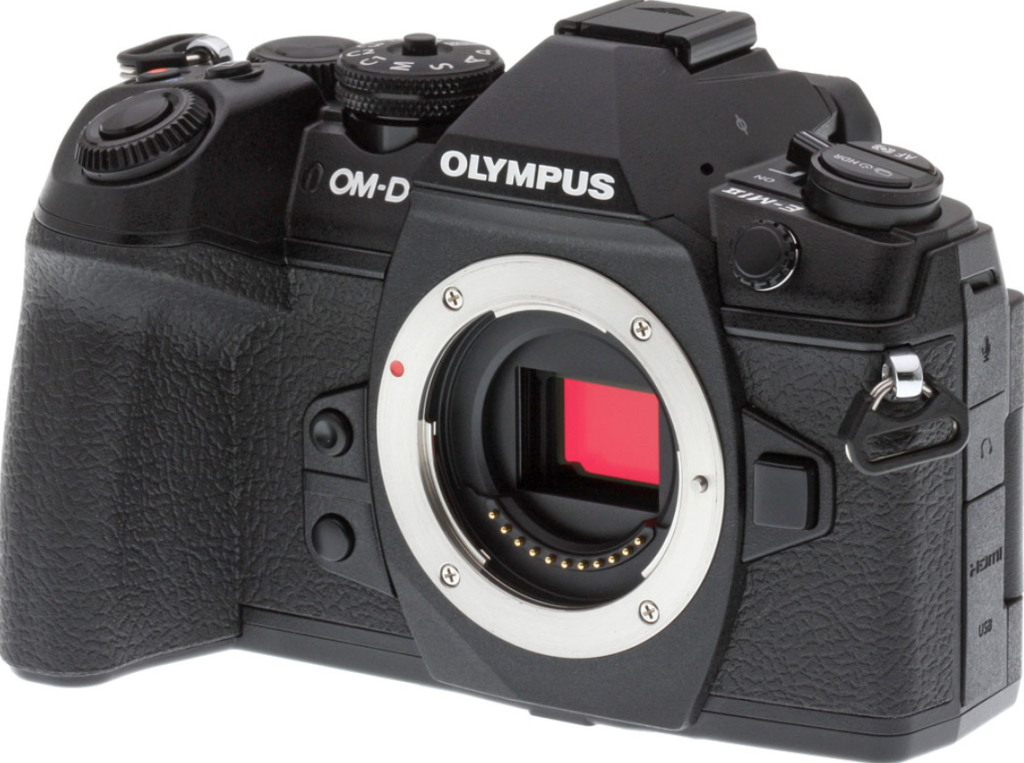
Quick Features
- 20.4MP M.O.S. sensor
- Max burst 18fps
- 3-inch LCD display
- 121 phase-detection autofocus points
The Olympus OM-D E-M1 Mark II (the E-M1m2) represents the family of Olympus’s Micro Four Thirds lineup. Introduced in late 2016 and made widely available in early 2017, this camera is an ideal blend of innovation and iterative enhancements. It’s a prime example of how flagship cameras like this have evolved over the years, inheriting features from their predecessors while continually pushing boundaries. The camera has a robust construction with a magnesium and aluminum body frame to ensure durability and sealing against moisture and dust.
Inside the E-M1 Mark II lies a host of excellent features, driven by a new 20-megapixel sensor. It introduces 121 phase-detect points that work universally with all lenses, not just older 4/3 lenses via an adapter. The camera’s most appealing aspect is its ability to deliver focus tracking at a rapid 18 frames per second (fps) using the electronic shutter (at ISO 8000 or less).
It can offload images at a stunning 60 fps with focus and exposure locked to the first frame. The camera’s buffer size is impressive, with a raw capacity of 77 images at 18 fps and 148 raw images at the mechanical shutter’s maximum speed of 10 fps.
One unique feature of the Olympus camera for sports photography is “Pro Capture,” which buffers images from the moment you half-press the shutter release, capturing the 14 images taken before fully pressing the release. This innovation eliminates the need to fill the buffer in anticipation of the decisive moment preemptively.
The autofocus system has been comprehensively redesigned. The sensor features 121 phase-detect points with cross-type sensors that cover about 75% of the short axis and 80% of the long axis of the frame. Also, the mirrorless sports camera provides flexibility with different focus options, including single-point, five-point, and nine-point groupings, face/eye priority, and thumb-controlled focus point selection through the rear LCD.
The E-M1 Mark II’s impressive performance lies in its five-axis sensor stabilization system that delivers 5.5 stops of stabilization per CIPA standards. This feature is further enhanced when paired with certain Olympus Pro lenses, reaching up to 6.5 stops. It empowers sports photographers to capture sharp images in challenging handheld situations.
The camera also introduces a sensor-shift high-resolution mode, generating 20-megapixel RGB images with added edge/detail discrimination.
Olympus’ I.S. system includes a centering function to ensure full correction on every shot. However, disabling centering is important for focusing on the maximum frame rate.
This camera shines in wide-angle and mid-range photography, handheld low-light situations with static subjects, and offers an extensive array of features for creative expression. However, it’s not ideal for indoor sports photography, where fast-moving subjects need higher ISO features.
Expert Opinion
The Olympus OM-D E-M1 Mark II is a compelling choice if you prioritize portability without compromising performance. Features like base ISO image quality, crop-sensor DSLRs, Pro Capture mode, and Responsive autofocus system make it one of the best cameras for sports photography.
Pros & Cons
Pros
Cons
Check Out More Reviews Here.
10. Nikon Coolpix P950 – Best Camera for Sports Photography Under 1000
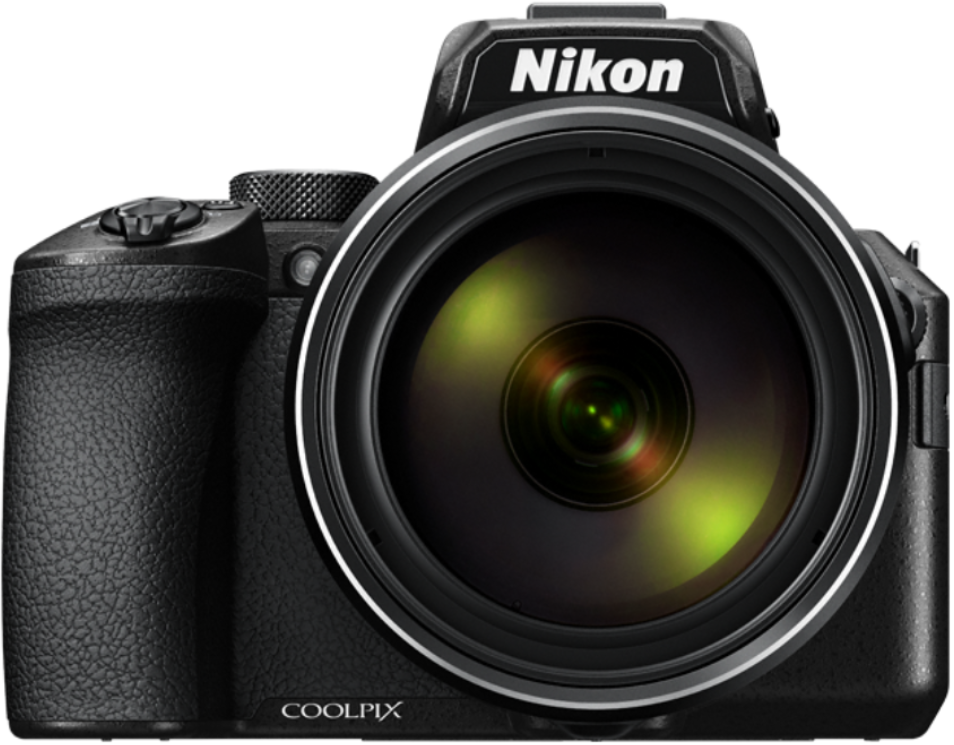
Quick Features
- 16MP M.O.S. sensor
- Max burst 7fps
- 3.2 inch LCD display
- 273 phase-detection autofocus points
The Nikon COOLPIX P950 is a superzoom bridge camera featuring a durable plastic body, but it’s not lightweight, which makes it hard to carry for long photography sessions. The rubberized grips on the Body provide a secure hold, and the camera’s rubber elements are non-slippery. However, the rubber around the viewfinder is somewhat stiff and uncomfortable.
The buttons on the camera are large and offer good tactile feedback. The fully articulated screen is a useful feature for shooting from unconventional angles. The menu system is basic and easy to navigate. The camera lacks a touch screen, another obstacle for quick usability.
The P950 features an 83x zoom lens, providing excellent shooting wide-angle and telephoto shots. However, its autofocus system struggles to keep moving subjects in focus.
The camera has a good image stabilization system for sharp shots, even at long focal lengths. It now supports R.A.W.
shooting, which is good for photographers who want more control over post-processing. The small 16MP sensor means that image quality can be compromised at higher ISO settings.
The camera’s video features are competitive but not outstanding. It can record 4K video, and while the quality is decent, it may suffer at long focal lengths due to haze and optical softness.
The P950’s image stabilization is impressive and provides stability even at extreme telephoto ranges. Unfortunately, its autofocus system doesn’t meet the demands of sports photography.
In terms of image quality, the camera’s JPEG output is acceptable at low ISO settings but becomes less favorable as ISO increases. Photographers looking for the best quality can use R.A.W. mode more frequently.
Expert Opinion
The Nikon COOLPIX P950 is a superzoom bridge camera with an impressive zoom range and good image stabilization. It’s suitable for photographers looking for a camera to capture images for sharing or occasional prints.
However, its autofocus system disappoints sports photographers. Under 1000, you can’ expect luxury features of high-end cameras like Canon E.O.S. 90D and Sony Alpha a6400 mirrorless cameras.
Pros & Cons
Pros
Cons
Check Out More Reviews Here.
How to choose Sports Photography Camera- the Buying Guide
Considering important factors, choosing the right camera for sports photography is possible. We have categorized the features to help you make the right choice easily.
Must-Have Features
- Fast Autofocus
A high-quality sports photography camera’s first and most important feature is its accurate and fast autofocus system. A quick and precise autofocus is necessary for tracking fast-moving athletes to get sharp and well-focused shots.
Look for cameras with advanced phase detection or hybrid autofocus systems. These functions are available in high-end DSLRs and mirrorless models.
- High Frames Per Second (F.P.S.)
A high F.P.S. rate enables you to capture rapid sequences of action. It is crucial for decisive moments in sports.
Choose sports cameras with F.P.S. rates of 8 or more for professional-level sports photography.
- Telephoto Lens Compatibility
Sports photographers must shoot from a distance, and compatible telephoto lenses allow close-ups of distant subjects.
Your camera system must offer a range of telephoto lenses suitable for your chosen sport.
- Low Light Performance
Some sports events occur in dimly lit arenas or during evenings. The type of sports needs good low-light abilities.
It is essential to check the camera’s ISO range and read user reviews on noise performance at high ISO settings.
- Burst Buffer
A generous buffer capacity prevents slowdowns when capturing continuous bursts. It ensures you never miss a moment.
Look for cameras with a large buffer that can handle long sequences of high-resolution images.
Important Features
- Weather Sealing
Weather-resistant cameras withstand outdoor elements. Whether it’s raining or a hot summer day, these sports photography cameras offer durability for shooting in tough weather conditions.
Confirm the camera’s weather-sealing rating and pair it with weather-resistant lenses for full protection.
- Customizable Controls
Custom buttons and controls allow on-the-fly adjustments without taking your eye off the viewfinder.
A camera offering customizable buttons and a user-friendly interface for efficient customization works best for sports and action photography.
- Viewfinder or High-Resolution LCD
A quality viewfinder or LCD helps compose shots and review images, particularly in bright sunlight.
It is recommended to test the viewfinder’s clarity and brightness under different lighting conditions and consider high-resolution LCDs.
- Image Stabilization
Stabilization reduces blur when using telephoto lenses and improves image sharpness.
Choose between in-body or lens-based stabilization based on your lens preferences and shooting style.
- Fast Memory Cards
The best thing about fast memory cards is that they ensure rapid data writing and prevent delays during continuous shooting.
Invest in memory cards with fast read and write speeds. Remember to check the compatibility with your camera’s specifications.
Additional Features
- Wireless Connectivity
Wireless options like Wi-Fi and Bluetooth simplify image transfer and remote control.
A sports photography camera supporting your preferred wireless connectivity method and compatible apps is an additional bonus for convenience.
- Durability
High-quality manufacturing protects the camera from drops and impacts during active sports coverage.
Research the camera’s build quality, manufacturing material, and durability carefully before deciding.
- Battery Life
Long battery life allows for longer shooting sessions without frequent recharging.
CIPA rating for battery life can help you choose the right one. Invest in spare batteries if you need a sports photography camera for long sessions.
Frequently Asked Questions
Is a DSLR or Mirrorless Camera Better for Sports Photography?
In sports photography, DSLR cameras have fast-paced action with optical viewfinders and extended battery life, while mirrorless cameras offer portability and increasingly competitive autofocus systems.
However, mirrorless cameras are becoming the preferred choice for sports photography due to their compact design and advanced autofocus features, crucial for capturing fast and dynamic sports action.
Are Dslrs Faster Than Mirrorless?
DSLRs are faster than mirrorless cameras because they have an advantage in terms of autofocus speed, especially when it comes to tracking fast-moving subjects in sports photography. DSLRs use phase-detection autofocus, which has been fine-tuned for speed and accuracy over the years.
However, it’s essential to note that the gap in autofocus speed between DSLRs and mirrorless cameras has significantly narrowed in recent years.
There are high-end mirrorless cameras with advanced on-sensor phase-detection or contrast-detection autofocus systems that rival DSLR performance.
What Type of Camera Lens Is Best for Sports Photography?
For sports photography, the best type of camera lens is a telephoto lens with a long focal length and a wide aperture. Specifically, a telephoto zoom lens with a focal length range that covers the distance between you and the sports action is ideal.
Lenses in the 70-200mm or 100-400mm range are popular choices. A wide aperture, with an f/2.8 or wider aperture, is crucial for sports photography because it allows you to achieve fast shutter speeds, even in low-light conditions, which is essential for freezing fast-moving subjects and capturing sharp images.
Also, image stabilization is good for handheld shooting at longer focal lengths. Sports photographers use prime telephoto lenses with fixed focal lengths, such as 300mm or 400mm, for capturing distant action on the field.
Do Sports Photographers Use Autofocus?
Sports photographers use autofocus (A.F.) with continuous A.F. modes to track fast-moving subjects. Specialized A.F. modes and advanced features like eye-tracking and object recognition are common.
Sports photographers also use manual focus techniques in challenging situations or shooting through obstacles. A combination of A.F. and manual focus skills is critical for capturing high-quality sports images.
Final words
When capturing those exhilarating sports moments, be it the crack of a bat or the speed of skis on the slopes, a dedicated sports photography camera is your best bet. While smartphones work in a pinch, a dedicated sports camera elevates your sports photographs and videos. Look for a camera with high frame rate options for smooth action and impressive slow-motion effects. In-body image stabilization (IBIS) is essential for handheld shooting, minimizing unwanted camera shake. Beware of heavy rolling shutter distortion, especially if you pan frequently.